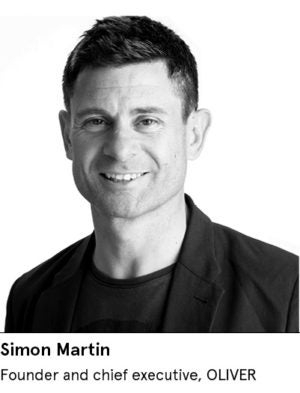 More than three quarters of brand leaders moved their advertising and marketing operations in-house in 2019, according to Digiday, with many marketers expecting that number to rise.
More than three quarters of brand leaders moved their advertising and marketing operations in-house in 2019, according to Digiday, with many marketers expecting that number to rise.
And yet in-housing continues to stir debate: can it really be better, faster and cheaper?
It can and is, says Simon Martin, founder and chief executive of OLIVER, arguably the world’s only company to exclusively build and run in-house agencies for brands, with clients including BMW, Barclaycard and Unilever.
“Technology created an explosion of channels and content, but brand budgets stayed the same,” he explains. “This led to a massive need for digital and operational transformation in marketing functions, and an appetite for in-housing.”
Proven to offer transparency, agility, creativity and, of course, cost-savings at a time when it’s desperately needed, the value of in-housing can no longer be debated. What was once a trend is now the mainstream model.
Martin says: “We’ve spent 15 years demonstrating how it can work for different kinds of businesses, as one size does not fit all. The question from marketers now is, ‘how should we do it?’”
How to in-house when no in-house team is the same?
Smart chief marketing officers will think broadly when navigating a shift to in-housing. Naturally, there are operational challenges. But there are also multiple ways to seemingly “in-house”. So which is the right way?
Brands can build a team to retro-fit the capabilities of their current agency suppliers or grow the capabilities themselves. Then there are bespoke models, such as OLIVER’s, which plug outside capabilities into a brand’s world via a custom-built team.
“It takes a long time to find the right solution. It’s why we blend people, process and technology to give brands their own tailored agency, which can then be instantly scaled and modified as new needs arise,” says Martin.
“Many corporate environments aren’t a natural fit for creatives, strategists and technologists. For businesses choosing to build their own in-house teams therefore, it means learning non-core capabilities to get to great work.”
OLIVER’s “out of the box” solution protects marketers from having to figure it out themselves. “Our proprietary model offers proximity to the brand as well as the freshness of external creative hubs, offshore teams and technology networks,” adds Martin.
Better work for less money
In the case of in-housing, it’s clear to see why bringing marketing capabilities closer to marketers is a no-brainer.
“Understanding our clients’ priorities from the inside helps us do better, more contextualised and immediate work for them,” says Martin. “Take Unilever. Since launching in 2016, their in-house operation U-Studio has grown to 21 locations across 18 countries. They’re the perfect example of marketers migrating from an interruption-based model to a model focused on permission and precision.”
And that’s the key differentiator. The success of marketing functions today lies in the level of knowledge they have about their buyers’ behaviour. This requires a deep proximity of thinking between brands and their partners – which is something only in-housing can achieve.
“We have a deliberate organisational design for this, made up of 80 per cent creatives and 20 per cent management. That’s compared to the 50:50 split of most traditional setups, which operate at a slower pace, are remote and more expensive,” says Martin.
Looking to the future, the demand for these efficiencies looks set to get stronger as brands become increasingly data and digital media-driven.
“We’re seeing brands reorganise every area of their marketing supply chain to look at how they drive performance. But to achieve this, they need to be brave and experiment with new ways of working. That’s the biggest test for advertisers today.”
For more information please visit www.oliver.agency



